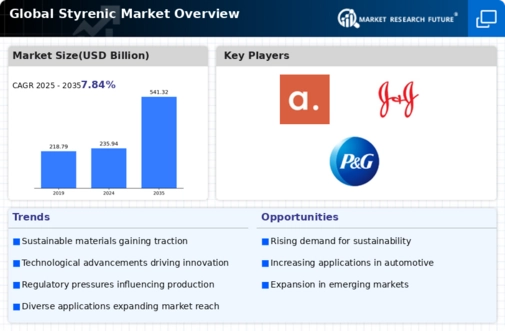Market Share
Styrenic Polymers Market Share Analysis
The worldwide polymer industry's Styrenic Polymers Market uses market share positioning techniques to gain a competitive advantage. Companies use product differentiation to set their styrenic polymer products apart. This means emphasising unique attributes such greater durability, processing, or customer-specific applications. Companies target specific markets and build loyalty by emphasizing these aspects.
Optimizing production processes, acquiring raw materials, and investing in technology may boost operational efficiency. Cost leadership lets organizations compete on price, recruiting price-sensitive clients and growing market share. To protect brand reputation, cost reduction must be balanced with product quality.
Geographic expansion also has a role in market share positioning. Companies strategically expand worldwide to enter new markets. This might entail building factories, distribution networks, and sales offices in undeveloped markets. Companies expand their market share and get access to varied consumer bases, allowing them to react to regional tastes and market needs.
Partnerships and collaborations are another important Styrenic Polymers Market tactic. To exploit capabilities and resources, companies develop strategic alliances with suppliers, distributors, or rivals. This collaboration may boost organizations' competitiveness by creating synergies in R&D, manufacturing, and distribution. Partners may exchange market knowledge, access new technology, and solve problems, boosting mutual progress.
Styrenic Polymers Market share positioning depends on innovation. Companies engage in R&D to develop novel styrenic polymer compositions, production techniques, and uses. Companies may launch cutting-edge items to suit client requests by keeping ahead of technology. Innovation distinguishes a firm from its rivals and boosts its industry leadership, attracting clients seeking cutting-edge solutions.
Environmental sustainability is becoming crucial in Styrenic Polymers Market market share positioning. Companies are realizing the necessity of recycling, minimizing carbon footprint, and producing biodegradable polymers. This approach coincides with consumer environmental awareness and promotes corporations as socially responsible. Green practices may provide organizations a competitive edge and increase market share as consumers prioritize sustainability.






Leave a Comment